Look inside Lyndhurst Mansion, a historic 14,000-square-foot Gothic Revival home featured in 'The Gilded Age'
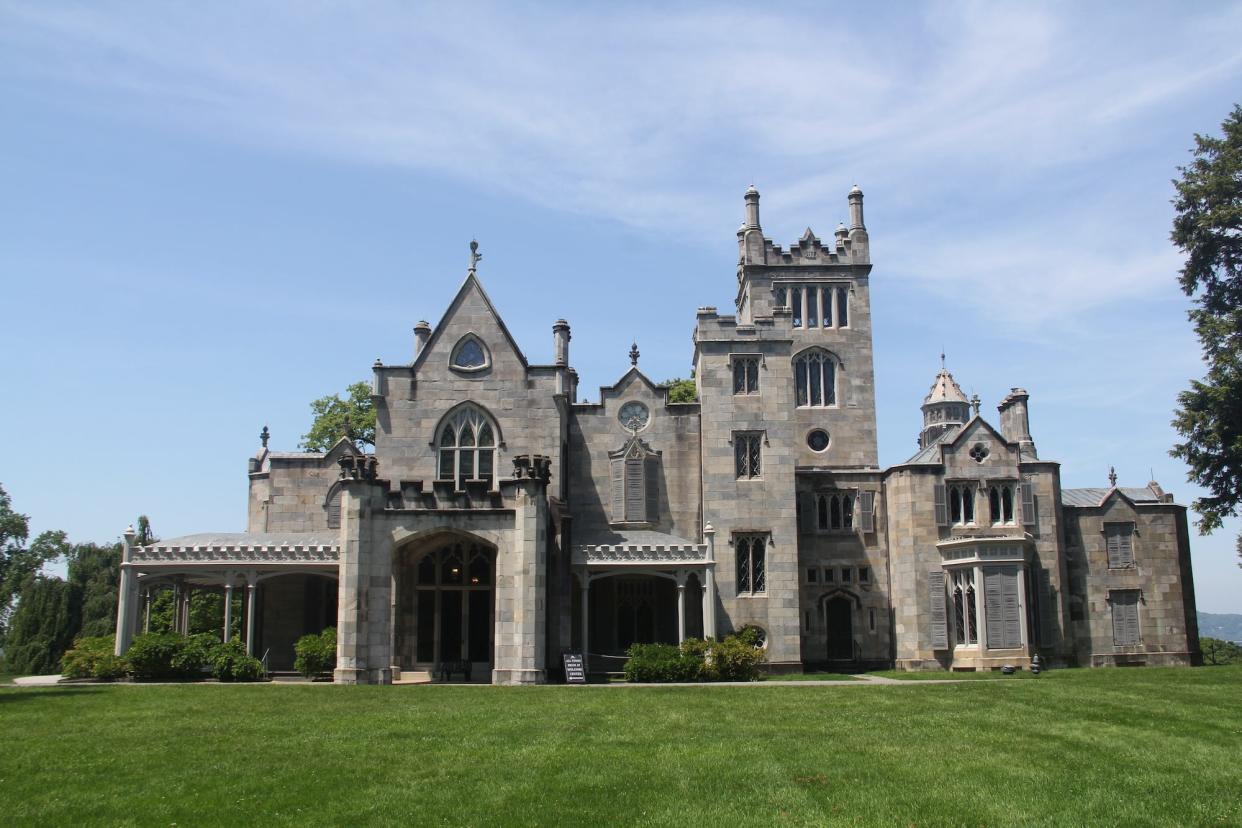
Lyndhurst Mansion in Tarrytown, New York, belonged to three elite New York City families.
Completed in 1842, the Gothic Revival mansion spans 14,000 square feet.
The Max show "The Gilded Age" was filmed inside the mansion and on the 67-acre grounds.
Lyndhurst Mansion in Tarrytown, New York, once belonged to three of New York City's wealthiest, most elite families. Now, it's a museum and an occasional film set for the Max show "The Gilded Age."
Located around 26 miles from New York City, the mansion was built by former New York City mayor William Paulding Jr. and completed in 1842. It was subsequently purchased by merchant George Merritt and railroad tycoon Jay Gould.
Take a look inside the historic home, including a behind-the-scenes look at its onscreen appearances in "The Gilded Age."
Once a lavish summer escape for New York City's elite families, Lyndhurst Mansion in Tarrytown, New York, is now a museum.

I booked an hourlong Classic Mansion Tour, which costs $25 and visits 16 rooms. The full list of tour offerings is available on Lyndhurst Mansion's website.
Seasons one and two of the Max show "The Gilded Age" were filmed inside Lyndhurst Mansion and on the 67-acre grounds.

On "The Gilded Age," Lyndhurst appears as the home of characters Charles and Aurora Fane, played by Ward Horton and Kelli O'Hara.
The estate grounds also served as Sheep Meadow in Central Park in the show.
Other grand New York homes from the period also serve as film sets for the show. An ornate library at Hempstead House in Long Island, for example, is used for George Russell's office.
The Carriage House, where horses were fed and groomed, is now the museum's Welcome Center.

Built in the 1860s, the carriage house's horse stables have been reimagined as booths.
The gift shop was once the tack room where bridles and saddles were kept.

The original metal hooks on the walls that once held saddlery now help display the assortment of clothes, accessories, and other merchandise sold in the gift shop.
Part of the Carriage House was also transformed into The New York Globe office for "The Gilded Age."
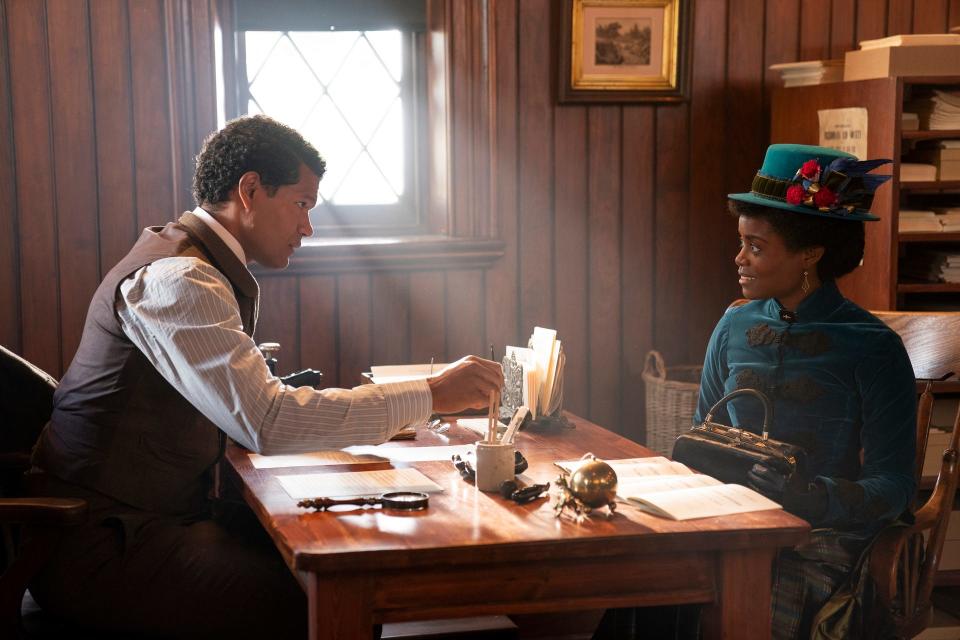
The New York Globe was a Black newspaper founded by Timothy Thomas Fortune, played by Sullivan Jones in "The Gilded Age."
When the show isn't filming there, the space functions as a screening room in the Welcome Center.

Visitors can watch an educational video about Lyndhurst Mansion and its history.
The tour began outside the mansion, where our guide spoke about the three families that owned the property: the Pauldings, the Merritts, and the Goulds.

In 1836, former New York City mayor William Paulding and his wife, New York real-estate heiress Maria Rhinelander Paulding, purchased the land overlooking the Hudson River to build a summer home.
Architect Alexander Jackson Davis designed the home and much of its furniture. Construction began in 1838 and was completed in 1842.
In 1864, the Pauldings' son sold the mansion to George Merritt, who made his fortune as the patent holder of a rubber spring used in railroad cars, and his wife, Julia. The Merritts rehired Davis to design an addition to the home, doubling its square footage.
After George's death, Julia sold it in 1880 to Jay Gould, a railroad tycoon and businessman who was one of the wealthiest figures of the Gilded Age, and his wife, Helen Day Miller. Adjusted for inflation, his net worth totaled approximately $71.2 billion.
Gould's daughter, Helen Gould, then took ownership of the property, followed by his youngest daughter, Anna Gould, who married a French aristocrat and spent most of her adult life abroad. After her death, Anna left the Lyndhurst estate to the National Trust for Historic Preservation, which manages the site today.
The name "Lyndhurst" came from the Linden trees that the Merritts planted on the property.
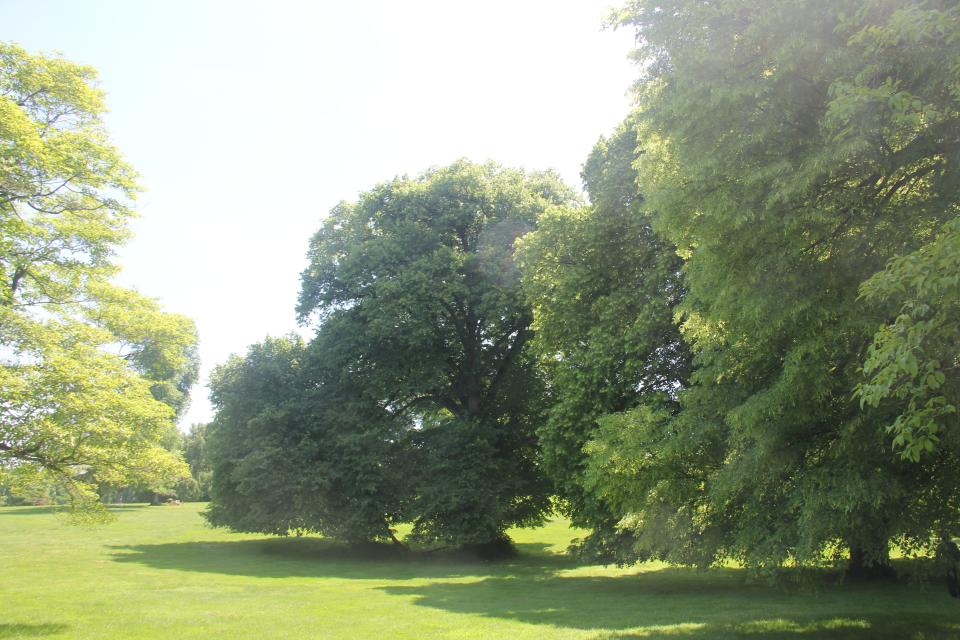
The Linden trees still grow on the grounds today.
We then moved into the porte-cochère, the enclosed doorway where residents boarded and disembarked from horse-drawn carriages.

The Merritts had Davis enclose the open porte-cochère from the Pauldings' era of the house with floor-to-ceiling doors and windows and construct a second porte-cochère outside.
The grand entryway featured a marble floor and four closets.

Closets were a sign of wealth, indicating that the owners could afford to use a room's valuable real estate for storage, the tour guide said.
The walls and the ceiling looked like marble, but they were actually handpainted plaster, another sign of wealth.

The Merritts could have afforded real marble, but it was more expensive to decorate with faux finishing than actual stone, making it a status symbol for their wealth.
The Parlor, also known as the Drawing Room, was used for family gatherings and entertaining.
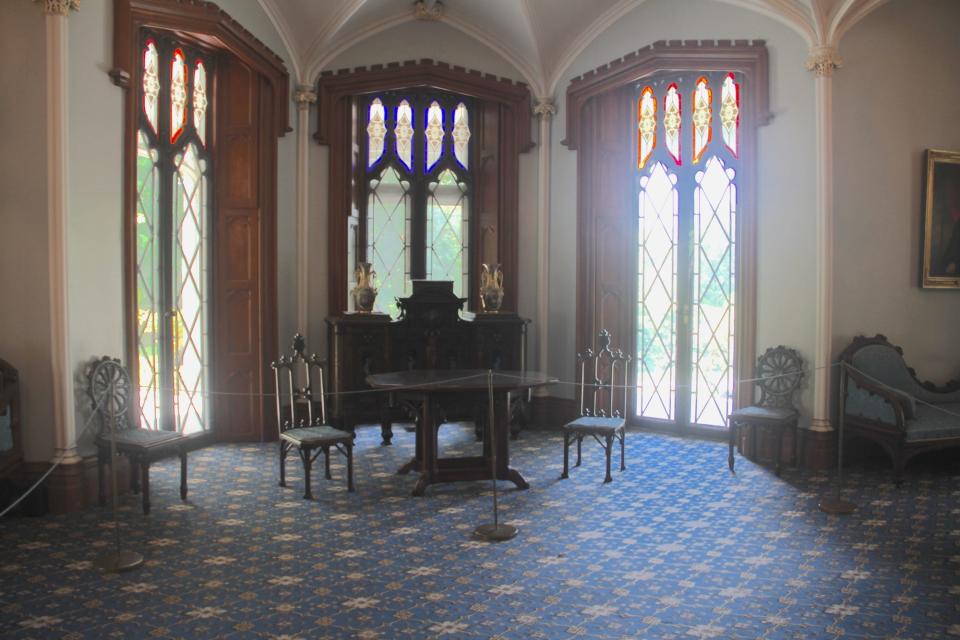
All of the furniture is original to the Pauldings, the home's first owners from 1842, except for the cabinet in the bay window.
A portrait of George Washington hung in a corner of the Parlor.

The piece was painted by American artist Rembrandt Peale.
"The Gilded Age" transformed the room for scenes in the show, though the same blue patterned carpet is still visible.

"The Gilded Age" brought all of its own furniture in for filming since the existing furniture pieces are valuable artifacts original to the home.
The formal Dining Room, added as part of the Merritts' renovation, featured a hexagon-shaped table designed by Davis.

Staff prepared food in a downstairs kitchen, brought it up on a dumbwaiter, and plated it in a butler's pantry off to the side of the room.
The fireplace was made of red-grain marble, but its columns were handpainted with a marble pattern over plaster and wood.

The walls were also hand-stenciled to look like they were covered with leather wallpaper.
The Dining Room featured stunning views of the Hudson River.

The Governor Mario M. Cuomo Bridge would not have been visible in the Gilded Age since it was completed in 2018.
Scenes from "The Gilded Age" were shot in the Dining Room.

The Dining Room appears in episode three of the first season of "The Gilded Age."
One of the mansion's grandest rooms was the enormous Art Gallery on the second floor.

Priceless paintings covered nearly every surface of the walls.
The Pauldings originally used the room as a library.

When the Merritts moved in, they turned the Pauldings' old dining room into their library and built the new dining room as part of the expansion.
The Lyndhurst guide called Gould's art collection "one of the finest intact Gilded Age art collections in the country."
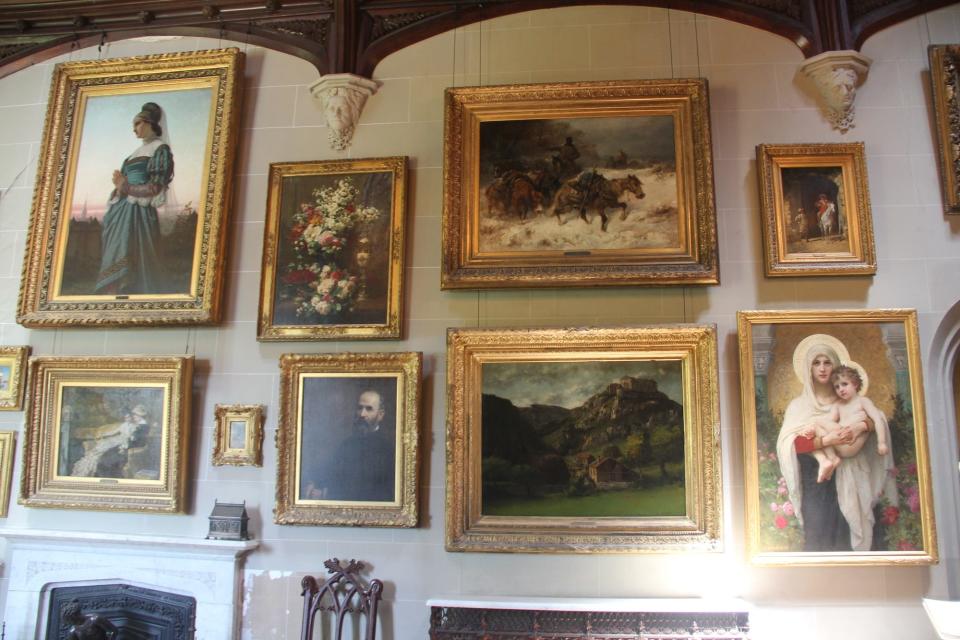
Gould's collection included pieces from French, German, and Spanish artists.
The State Bedroom off the Art Gallery was considered the best guest room in the house.

The room featured a Tiffany & Co. stained-glass window.
A bathroom in the hallway was furnished with pink double sinks sourced from Trenton, New Jersey.

The bathroom also included a claw-foot tub and rain-style shower.
Gould's daughter, Anna Gould, redecorated her late sister Helen's girlhood room and turned it into a guest room.

Anna Gould continued to sleep in her childhood bedroom when she visited Lyndhurst.
Before electricity, Lyndhurst's wealthy residents used speaking tubes in the walls to communicate with servants.

The tubes connected to the butler's pantry downstairs.
Back downstairs, the estate office contained one of the mansion's most valuable artifacts: Gould's "laptop."

Gould's 100-pound Wooton desk, known today as his "laptop," held all of his business paperwork and accompanied him to work in New York City every day.
Gould refused to take the railroad to work because it was owned by his archrivals, the Vanderbilts.

Even though the railroad passed right by Lyndhurst Mansion, Gould commuted with his desk down the Hudson River on his steam yacht called the Atalanta. The journey took around 45 minutes.
The Vanderbilts also owned a mansion upstate during the Gilded Age in Hyde Park, New York.
Once the mansion tour concluded, the guide encouraged us to spend some time exploring the grounds.

The property is full of walking trails, gardens, and scenic picnic spots with views of the Hudson.
I could see why the estate stood in for Central Park in "The Gilded Age."

The wooded paths, park benches, and grass lawns looked just like Central Park.
While walking along the river, I stopped inside the bowling alley built for Helen Gould in 1894.

The bowling alley can be rented for special events where guests bowl with the lightest possible balls to help preserve the historic space, according to The National Trust for Historic Preservation.
Lyndhurst Mansion and its sprawling estate are worth a visit even if you've never seen "The Gilded Age."

With so many notable residents and original furnishings, the home preserves the opulence of the real Gilded Age.
Read the original article on Business Insider


